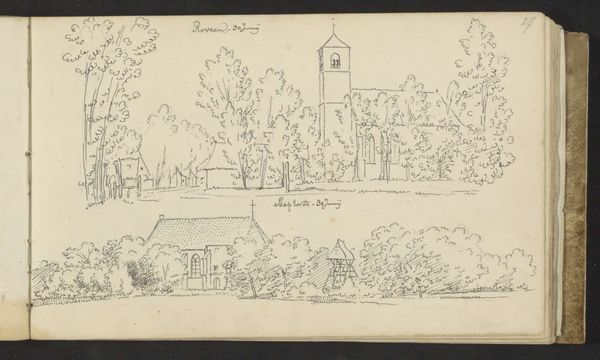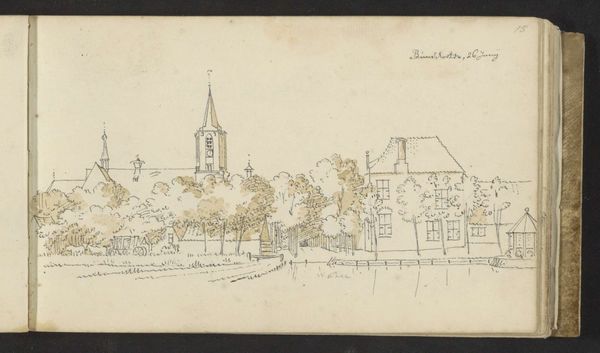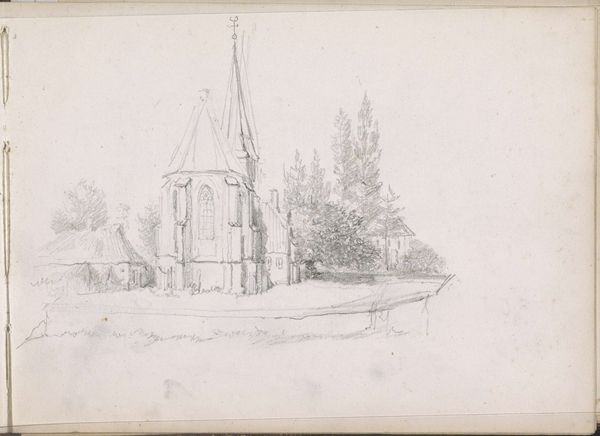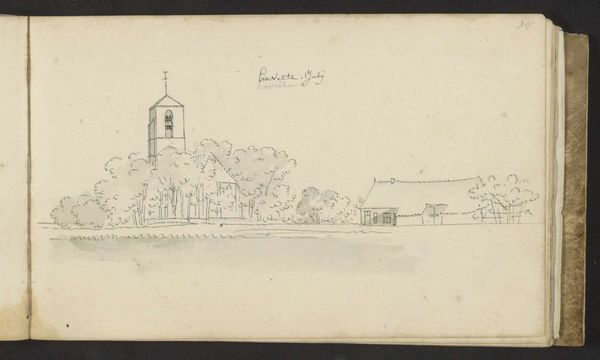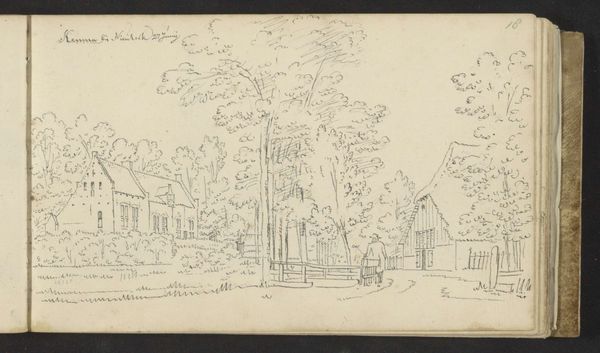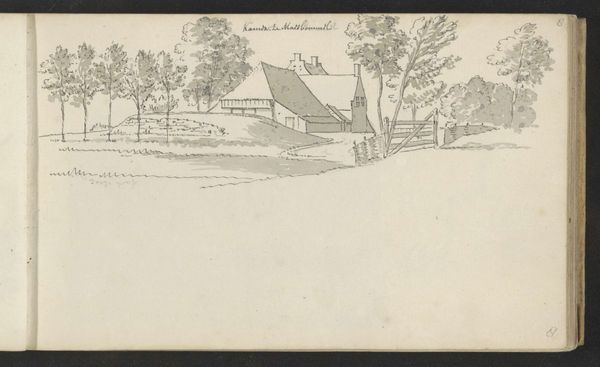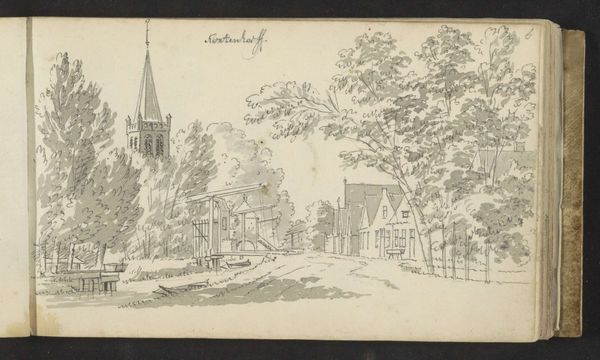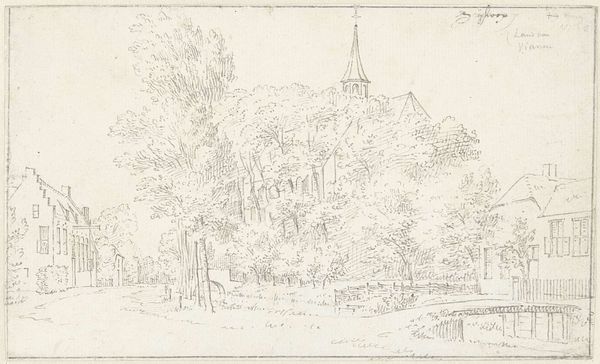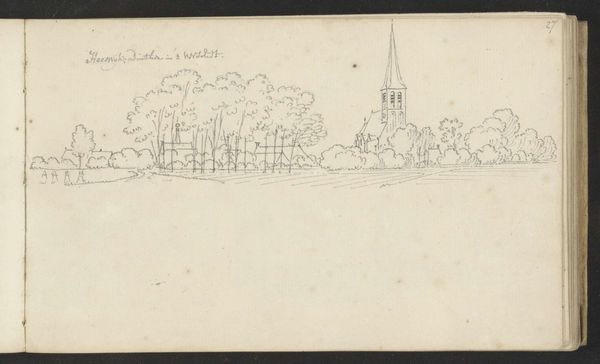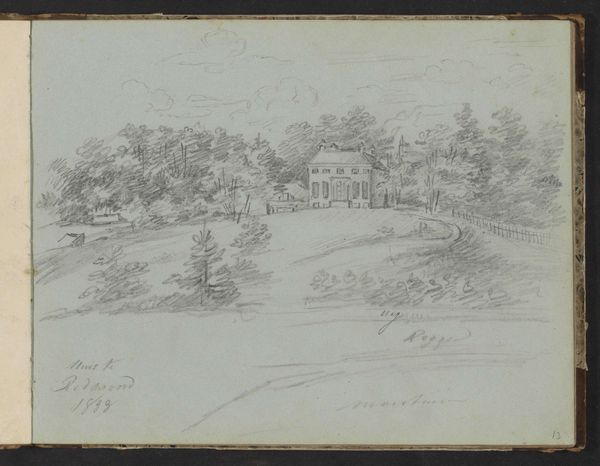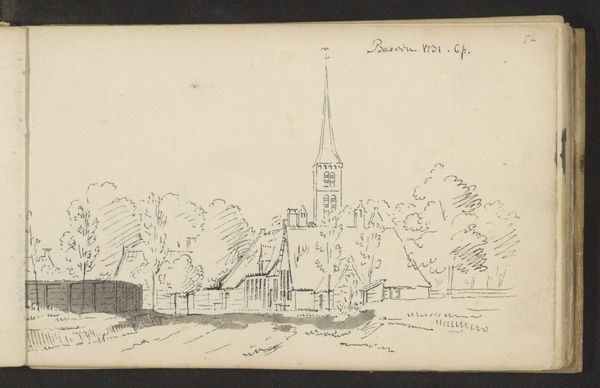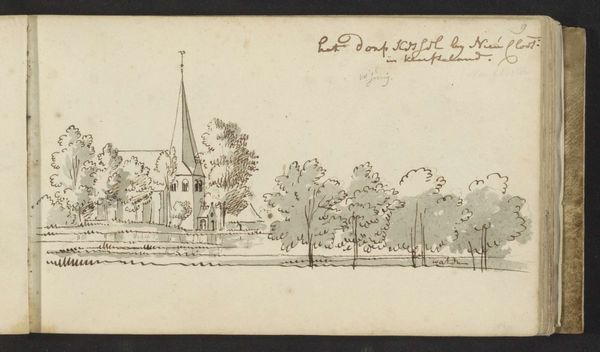
drawing, ink, pen, frottage
#
drawing
#
dutch-golden-age
#
landscape
#
ink
#
pen
#
frottage
Copyright: Rijks Museum: Open Domain
Curator: Here we have Abraham de Haen the Younger's "Dorpsgezicht te Nijeveen," which translates to "Village View of Nijeveen," possibly created between 1732 and 1737. Editor: My first impression is its simplicity. A light, almost fleeting sketch. The ink wash feels very immediate, a sort of on-site record, doesn’t it? You can almost hear the scratching of the quill on the paper. Curator: Exactly. It embodies a specific cultural memory—the Dutch Golden Age landscape tradition, finding the sublime in the everyday. The church spire, though subtly rendered, pierces the skyline. The frottage is an anchor in both landscape and cultural time. Editor: The artist's hand is quite evident. I'm curious about the choice of ink and pen on paper. What sort of availability would those materials have had at that time? Was paper becoming more common? The frottage looks more like a smearing technique in service of light rather than material exploration, but it does soften what would be rather crude, blocky dark areas by adding tonal variations, that create depth with light in a very particular way. Curator: Ink, pen, and paper were increasingly available to the burgeoning middle class, suggesting a democratizing trend in artistic creation, capturing moments in life for oneself and others. The church's prominence represents more than mere aesthetics; it signifies spiritual and social order in this village community, the psychological foundation of village life at the time. Editor: True. It grounds the image. I’m now thinking of the labour involved, of gathering materials, of transporting them… of the craft, too, especially the penwork to create depth using fine hatched and slightly wavering marks. All this makes this sketch a beautiful record of skill that transcends merely the utilitarian depiction. Curator: That balance is key. It's not merely documentation; it imbues the scene with an atmosphere that transcends time. A quiet pastoral scene becomes a symbol of societal values of the age, a visual reassurance in an age of rapid change. Editor: I agree, there’s a harmony to this that belies its simple execution. Curator: The symbolic is hidden within plain sight. The Dutch light becomes a carrier of moral weight. Editor: I'll carry that insight with me. Now I see this pastoral image as not only a visual document but also an item deeply entangled in labor and cultural implications.
Comments
No comments
Be the first to comment and join the conversation on the ultimate creative platform.
